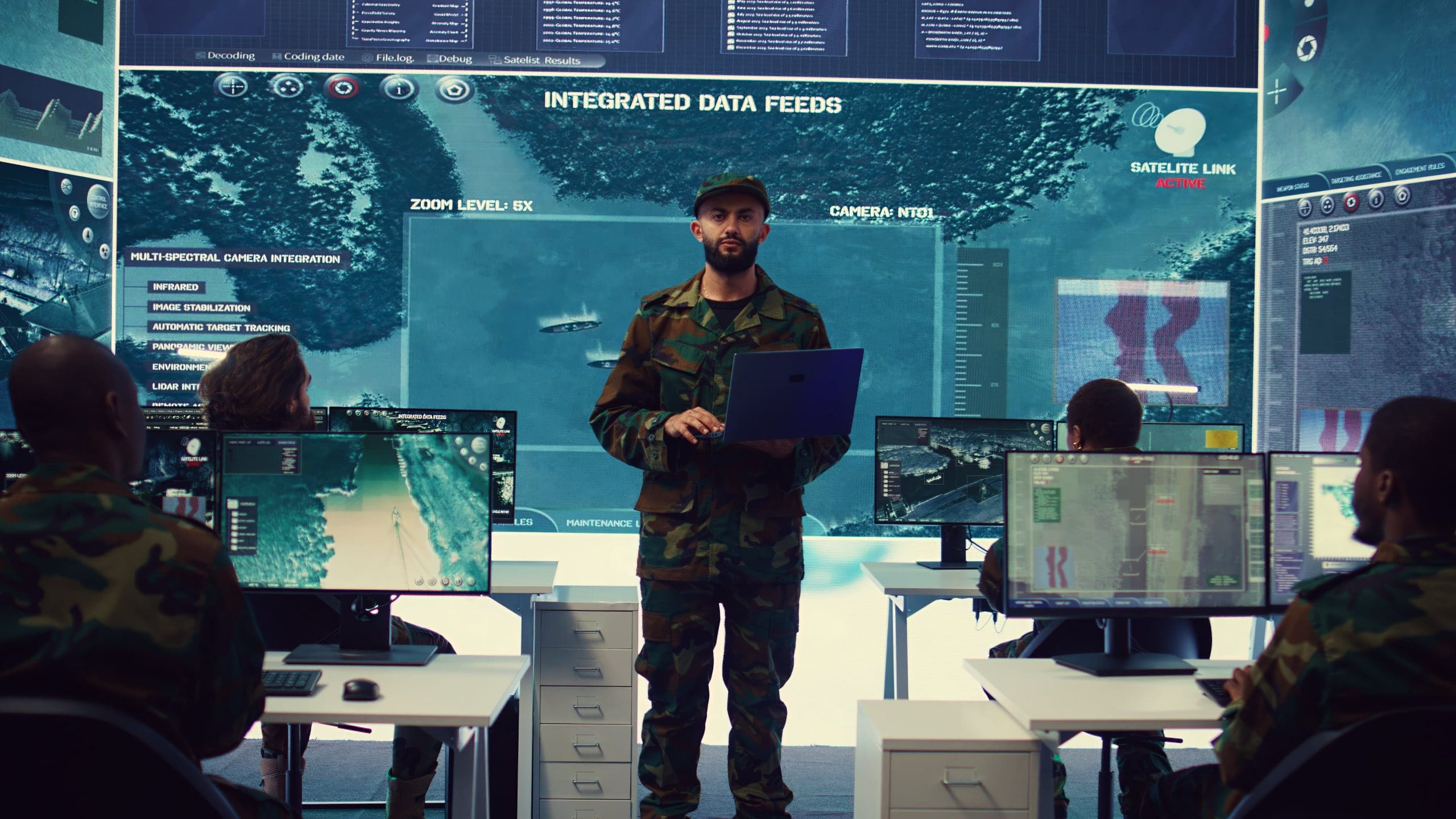
Managing C4ISR systems—Command, Control, Communications, Computers, Intelligence, Surveillance, and Reconnaissance—has become more and more complex. Operators need to process vast amounts of information fast, where every second matters and mistakes are not an option. These systems are mission-critical for management, especially in military or crises, providing leaders with tools for informed decision-making and coordination. C4ISR systems include real-time intelligence gathering and seamless communication channels.
Expanding on this, C5ISR adds a focus on Combat Systems, upgrading the framework to cover all aspects of mission management. This expansion reflects the growing need for integrated solutions that handle modern operations’ increasing complexity. By incorporating Combat Systems, C5ISR solutions offer a more complete infrastructure, covering all elements of mission planning, execution, and assessment.
C4ISR stands for “Command, Control, Communications, Computers, Intelligence, Surveillance, and Reconnaissance.” This framework builds on the traditional concept of command and control (C2) by incorporating advanced communication and computer systems, improving information flowon-making processes in military operations. The “ISR” component focuses on gathering, processing, and using intelligence and conducting surveillance and reconnaissance activities.
In essence, C4ISR creates a highly integrated system that quickly disseminates accurate information to commanding officers, enhancing the speed and effectiveness of military operations. C4ISR is a standard in NATO military management, helping achieve an informational advantage over adversaries. Combining units and intelligence capabilities into a unified combat space supports the doctrine of “network-centric warfare,” where information sources are consolidated into one integrated system.
This integration significantly accelerates commanders’ ability to make informed decisions during combat and helps maintain control even if command centers are compromised. Additionally, C4ISR principles can reduce costs on artillery and lower personnel losses, ensuring more effective and safer military operations.
The DoD defines C5ISR as “the exercise of authority and direction by a properly designated commander over assigned and attached forces in the accomplishment of the mission.” C5ISR builds on the C4ISR framework by adding a crucial component: cyber-defense. The term was initiated by the US Army and has since been widely adopted across various military applications. It stands for “Command, Control, Communications, Computers, Cyber-defense, Intelligence, Surveillance, and Reconnaissance.”
Command and control (C2) involves directing people, organizations, information, and equipment activities toward achieving a common objective. Integrating Computers and Communications into C2 forms what is known as C4, enhancing the system’s ability to manage information flow and decision-making processes. Our C5ISR solutions further streamline these processes by providing advanced tools and technologies.
Adding Cyber-defense transforms C4 into C5, reflecting the growing importance of cybersecurity in military operations. This crucial addition ensures the protection of all computer and communication systems against unauthorized access and cyber threats, thereby maintaining the integrity and confidentiality of critical military information.
The second part of the acronym, ISR, stands for Intelligence, Surveillance, and Reconnaissance. These activities involve gathering, processing, and utilizing intelligence data and performing surveillance and reconnaissance tasks to provide valuable information for decision-making.
Essentially, C5ISR solutions represent a comprehensive framework that supersedes C4ISR by incorporating cybersecurity measures, offering a robust, all-encompassing system for modern military operations.
The key difference between C4ISR and C5ISR is the addition of cyber-defense. While C4ISR focuses on combining communication and computer systems with command and control, C5ISR takes it further by including cybersecurity measures. This addition is crucial in today’s digital age, where cyber threats can jeopardize entire missions and national security. Cyber-defense in C5ISR helps protect sensitive military information and operational plans, ensuring they stay safe from unauthorized access and attacks.
A naval fleet operations center equipped with satellite communication links, secure radio networks, and advanced computer systems that interface with unmanned maritime drones and reconnaissance aircraft. The system collects, processes, and disseminates real-time intelligence about enemy ship movements, weather conditions, and maritime hazards to facilitate swift decision-making and coordinated fleet maneuvers.
An air force command center furnished with encrypted satellite communication systems advanced AI-driven analytics platforms, and robust cybersecurity measures such as intrusion detection systems and encrypted communications. This center supports intelligence, surveillance, and reconnaissance operations by analyzing drone footage, monitoring electronic signals, and protecting sensitive data from cyber-attacks, ensuring the continuous flow of reliable information and maintaining airspace security.
Military acronyms like C4ISR and C5ISR evolve constantly because of the need to integrate new and advanced technologies into the Command and Control (C2) framework. As technology progresses, the military must adapt to include these innovations to maintain strategic advantage and operational efficiency. While the core concept of C2 remains the same—serving as the backbone for integrating various advancements—it ensures flexibility and keeps up with technological progress.
This evolution is everything. For example, transitioning from C4ISR to C5ISR shows the increasing importance of cybersecurity in today’s military operations. Future versions of these acronyms might include other emerging technologies or practices, representing just how dynamic and fluid warfare is and why adaptive frameworks are necessary.
Zero Point’s C5ISR experts are on standby to give you data when and where you need it on a growing number of systems, sensors, and platforms that are mission-critical to your operations. Contact us at 1-757-721-6601 to get started.